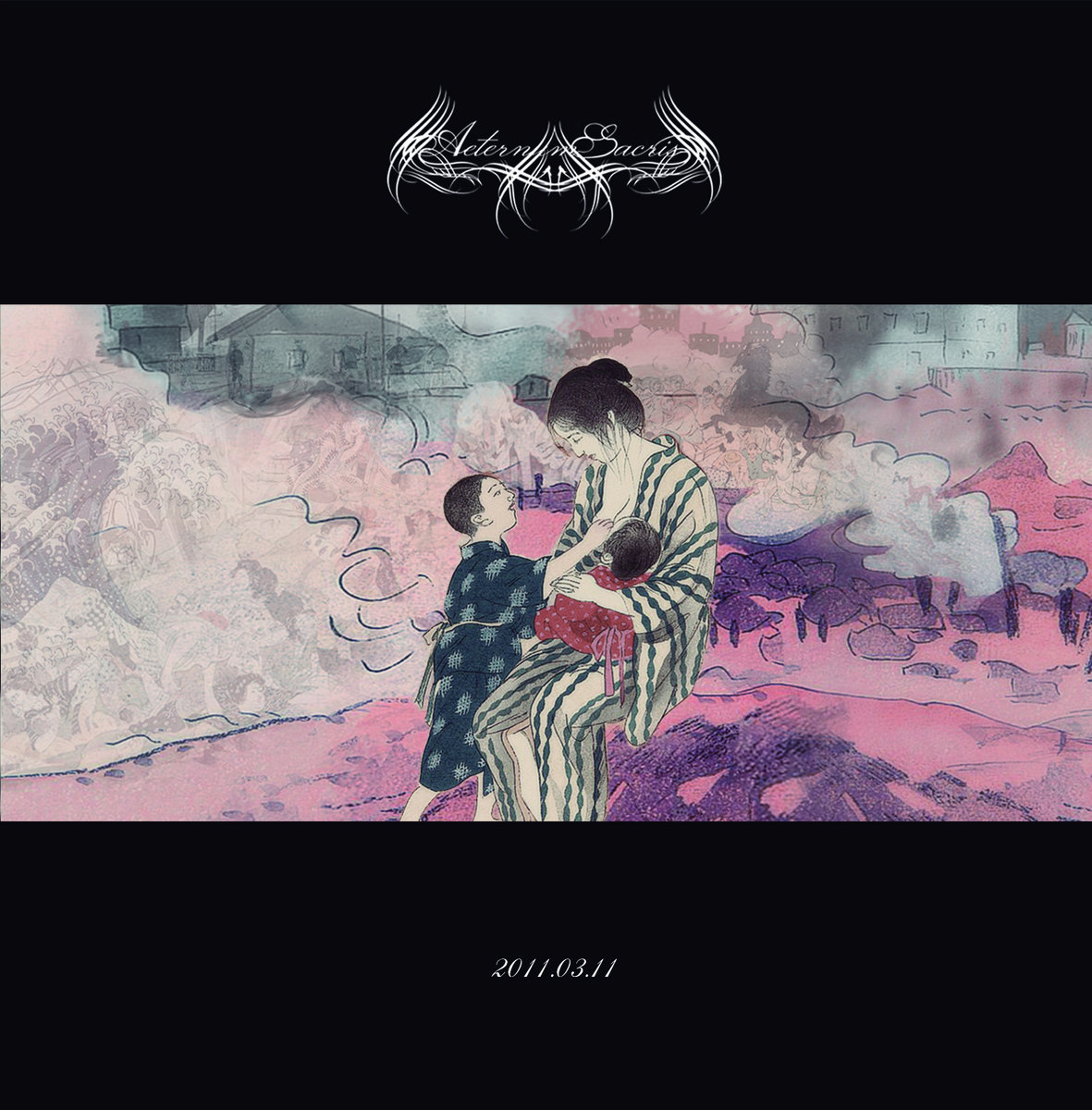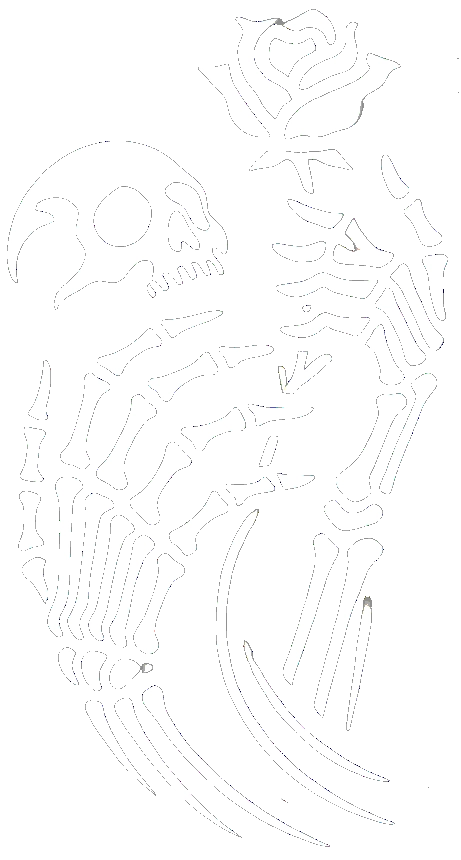Japan and Funeral Doom share a niche connection that has reached its clear peak in popularity with the label Weird Truth and the band Funeral Moth. Beyond these, few other notable names emerge. Japan is not a nation associated with a large, distinct funeral doom scene. As such, expectations for the production of a thoroughly Japanese funeral doom album remain modest. Unlike Italian or Russian funeral doom, there is no stereotype of musical or lyrical expression that shapes the expectations of listeners. Prominent names such as the experimental Japanese doom act Boris or the relatively more visible Funeral Moth incorporate elements like jazz into their sound. However, two names alone do not establish a scene nor suggest a unique stylistic character. Other funeral doom representatives from Japan are rarely internationally recognized—even by funeral doom standards. The better-known group Begräbnis, with their German lyrics and noise-heavy music, leans toward hybridizing funeral doom with drone and post-industrial, while Kanashimi merges it with depressive black metal, and Aeternum Sacris adopts an ambient funeral doom approach.
The album “2011.03.11”, discussed here, was a project eight years in the making, originating in the wake of the Tōhoku earthquake and tsunami of March 11, 2011, which triggered the politically and ecologically far-reaching Fukushima nuclear disaster. In the same year, Aeternum Sacris released a demo that would eventually evolve into this album, presenting music that stood out from their previous work with its rich emotional depth. The completed album was finally released in April 2019 via Silent Time Noise, combining reflections on the catastrophe, Japanese folklore, and ambient funeral doom into a deeply tragic work.
Fukushima
Fukushima has become synonymous with a series of accidents and malfunctions at the Fukushima Daiichi nuclear power plant, collectively regarded as a catastrophic nuclear disaster. The sequence began on March 11, 2011, at 2:47 PM with the earthquake and unfolded simultaneously across four of the plant’s six reactor units. Three reactors suffered core meltdowns, releasing large amounts of radioactive material and contaminating the surrounding area. Up to 150,000 residents had to evacuate, leaving behind hundreds of thousands of starving livestock in the region, which was primarily agricultural. All reactor units were shut down, and four were destroyed. The Japanese government ultimately abandoned the site entirely.
The international response was one of outrage, with many countries reconsidering their reliance on nuclear energy. For Japan, however, Fukushima became a quid, in Lyotard’s terms: a pivotal moment that disrupts the flow of experience and divides time into a “before” and “after.” In the context of Doctor Who, it would be called a fixed point in space and time: a global event of historical significance. Cleanup efforts were estimated to take up to 40 years. Statistics regarding the human and environmental toll remain vague and, in some cases, appear downplayed. While the medium-term impact on human health seems surprisingly limited, with reports of safety and recovery in parts of the region, the ecological damage—particularly to the seabed—appears severe and enduring.
Aeternum Sacris
This one-man project from Kawasaki (between Tokyo and Yokohama) creates a mournfully sorrowful funeral doom characterized by dense and emotionally charged compositions. The music is often reservedly dark, with high atmospheric density and an oppressive mood. The mastermind behind the project goes simply by Sacris, maintaining a degree of anonymity in the global cultural sphere. For Sacris, what matters is the music itself, which is left to speak on its own merits.
The demo that laid the foundation for this album was offered for free download, accompanied by a request: instead of paying him, listeners were encouraged to donate the money to victims of the disaster or other charitable causes. The creation of the album named after the date of the catastrophe began shortly after the event itself.
2011.03.11
Under the shocking impact of the disaster, with all the fears and anxieties it brought, the first recordings were made amidst the fresh experiences of that time. Full of tragedy, Sacris commemorates the horrific impressions and the accompanying fears of the population—of which he is a part.
Nearly wordless, the album drifts between waves. The music emerges as a clear, tenderly restrained mix that is as cold and multifaceted as polished crystal. The pain and tragedy of the subject matter flow forth with dignified restraint. The whispered, murmured, and sporadic vocals capture a sense of mourning from the background with an emotional depth that would elude even the most overwrought performances. Sacris achieves a delicate balance, blending reverence and shock across heavy, languid guitar chords, acoustic guitar passages, strings, and orchestral elements.
Formally, Aeternum Sacris aligns with the tradition of Belgian ambient funeral doom projects, demonstrating the atmospheric and emotional depth seen only in their finest moments. “2011.03.11” is an ocean of understated, sincere grief and reverence in the face of a nuclear, natural, and human catastrophe. In addition to electric guitar, the album’s sound incorporates components such as acoustic guitar, various orchestral and synth sounds, subdued male vocals mixed into the background, and accompanying sacral female vocals. Percussion is sparse, used for punctuation, while some keyboard layers drift gently through the music, occasionally taking over the melodic lead from the guitar. The arrangements of these elements flow, glide, and intertwine in a complex, multi-layered structure, creating considerable depth.
The album opens with “Courage”, a meditative, tranquil piece that evokes stark Japanese landscapes under the sound of a koto. The following track, “In Our Hearts”, introduces droning guitar chords that gradually take up more space in the soundscape. “Deep” and “Between the Devil and the Deep Blue Sea” contain the bulk of the album’s destructive, crashing sounds and moments of anger, which are only occasionally interrupted by brief instances of illusory calm. Yet Sacris never loses the composure that defines the album’s overall tone. The violence never becomes excessive; instead, there is a haunting beauty in the brutal waves crushing the land and manmade structures, interrupted only by fleeting moments of respite—like gasps for air. The closing track, “Staring at Nothing”, mirrors the beginning with its gentle winds, evoking a panoramic view of the earthquake- and tsunami-scarred region. The contemplative opening sequence of Twin Peaks comes to mind, juxtaposing the theme with the horrific realization that even in chaos and destruction, beauty can still exist when viewed from enough distance.
The remaining four tracks form a postscript developed over the years: “The Lies Will Remain” examines perceived government deception, “Naoto Matsumura” pays tribute to an activist, “The Nature and the End” reflects on the region’s present state, and “The Wave” contemplates the sea as both origin and threat. These tracks highlight the transformations Fukushima has brought to both Japanese and global life.
Conclusion
Emotionally and musically, the original core of “2011.03.11”—created directly as a subjective expression of trauma—is more remarkable than its subsequent additions. The sublime beauty of nature as a tender yet menacing threat has rarely been portrayed so effectively. This raises the question: would this richly detailed album resonate as strongly without the context of its subject matter, or would it risk becoming just another ambient funeral doom album teetering on the edge of kitsch? On a broader scale, it prompts reflection on the role of the genre in articulating both the specific trauma of a nation and the collective grief of a global community.


3 Responses
Thank you so much for this review, the person behind it totally understood the musical landscape that I tried to draw. It was the loss, the sadness and the anger that made the brush strokes. My total appreciation and gratitude!.
I was unfamiliar with your work until I received this article from Kai. I am very thankful to him for bringing it to my attention. Great work!
Thank you very much, my full appreciation and gratitude for your music. I’m just writing about it